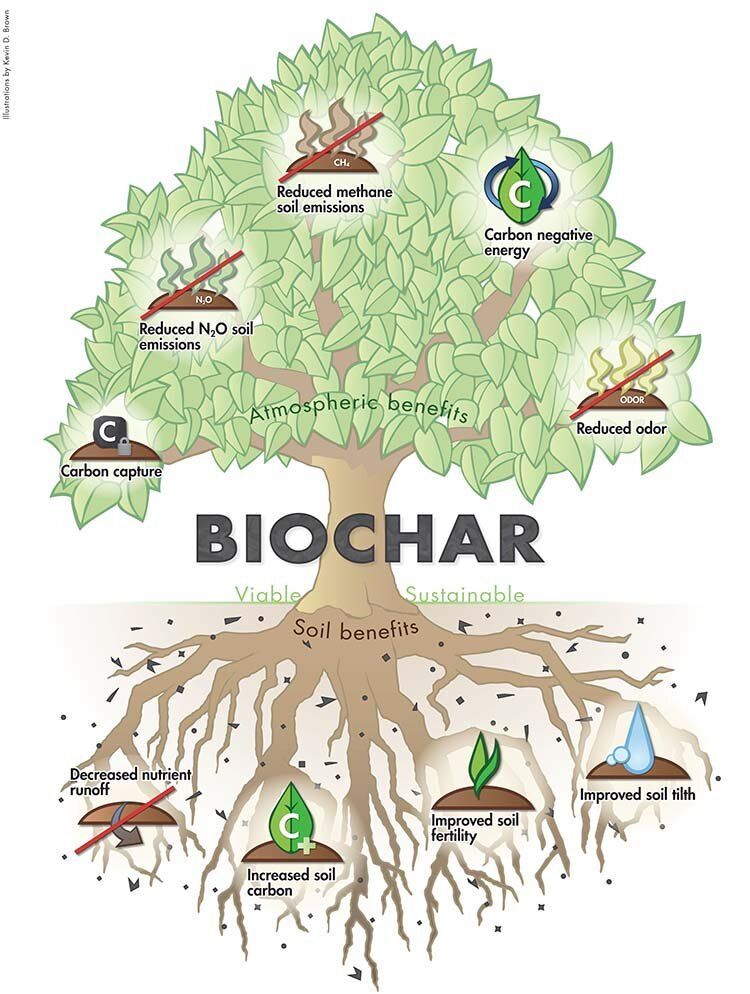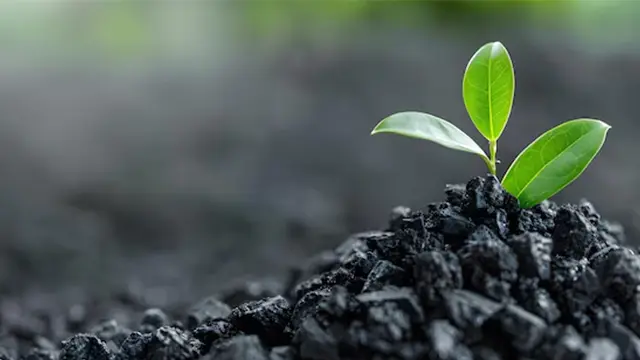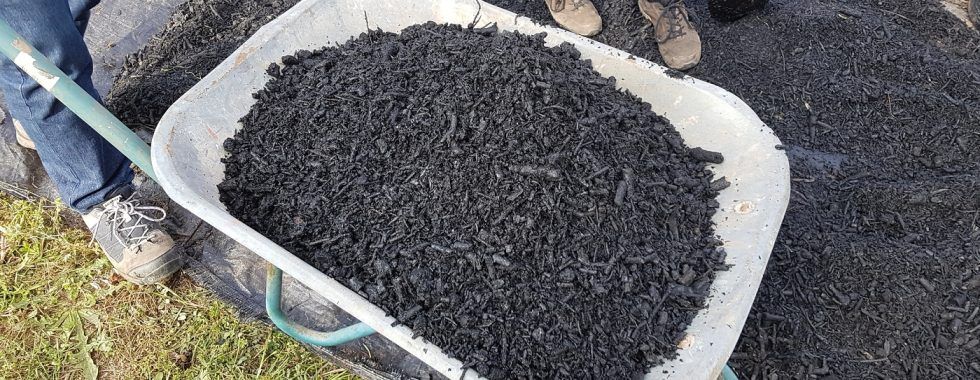Eco-friendly. Locally sourced. Carbon-smart.
bio-char
What is Bio-Char?
Biochar is a carbon-rich product that is produced through a process known as pyrolysis, which involves burning organic materials—such as wood waste, agricultural residues, or other plant matter—in a low-oxygen environment. This controlled method of combustion not only prevents full incineration but also captures and stabilizes carbon, resulting in a substance that can be beneficial for soil enhancement and environmental sustainability. The creation of biochar not only helps in managing waste but also provides a means of sequestering carbon, thereby playing a significant role in mitigating climate change.
1000+
Years of Carbon Stability.
Biochar can remain stable in soil for hundreds to thousands of years, acting as a long-term carbon sink and helping combat climate change.
50%
Reduction in nutrient runoff.
Biochar can reduce nitrogen and phosphorus runoff by 30–50%, which helps protect nearby waterways and promotes more efficient fertilizer use.
80%
Improvement in water retention.
Biochar can improve soil water retention by up to 80%, making it ideal for drought-prone areas and reducing irrigation needs.
50%
Increase in crop yields.
Studies have shown that biochar-amended soils can increase crop yields by 10% to 50%, especially in degraded or nutrient-poor soils.

Biochar soil Benefits: Boost Yields, Enrich Soil, and Save Water
Biochar is a powerful tool for both gardeners and farmers seeking to improve soil health, enhance plant growth, and promote long-term sustainability. When added to soil, biochar increases its ability to retain water and nutrients, making it especially valuable in dry or nutrient-depleted environments. This improved retention means less watering and fertilizing—saving time, money, and resources—while creating healthier, more productive plants. The porous structure of biochar also creates a welcoming habitat for beneficial microbes and fungi that support root systems and promote natural soil fertility.
For farmers, biochar offers a long-lasting soil amendment that doesn’t break down like compost or mulch. It can improve crop yields, especially when used alongside compost or organic fertilizers. In addition to agricultural benefits, biochar plays a role in carbon sequestration by locking carbon in the ground for hundreds to thousands of years. This makes it an eco-smart choice for those who want to reduce their carbon footprint while regenerating the land. Whether you're growing vegetables in your backyard or managing acres of farmland, biochar is a simple, natural way to cultivate healthier soil and support a more resilient food system.
Benefits of Biochar as an Animal Feed Supplement
Biochar, a carbon-rich material produced through pyrolysis, has been traditionally used to treat digestive disorders in animals. Recent studies have explored its role as a regular feed additive, revealing several potential benefits:
- Improved Digestive Health: Biochar's porous structure allows it to adsorb toxins, pathogens, and excess nutrients in the gastrointestinal tract, potentially reducing digestive issues and enhancing nutrient absorption.
- Enhanced Feed Efficiency: By facilitating better digestion, biochar may improve feed conversion ratios, leading to more efficient weight gain and potentially reducing feed costs.
- Reduced Methane Emissions: Some studies suggest that biochar can lower enteric methane production in ruminants, contributing to greenhouse gas mitigation efforts.
- Improved Manure Quality: Biochar-enriched manure has been observed to have higher nutrient content and reduced odor, making it a more effective and environmentally friendly fertilizer.
It's important to note that while these benefits are promising, results can vary based on factors such as biochar type, dosage, and animal species. Further research is ongoing to optimize its use in livestock diets.
Frequently Asked Questions
Question would go here
This is the text area for this paragraph. To change it, simply click and start typing. Once you've added your content, you can customize its design by using different colors, fonts, font sizes and bullets.
Question would go here
This is the text area for this paragraph. To change it, simply click and start typing. Once you've added your content, you can customize its design by using different colors, fonts, font sizes and bullets.
Question would go here
This is the text area for this paragraph. To change it, simply click and start typing. Once you've added your content, you can customize its design by using different colors, fonts, font sizes and bullets.
Question would go here
This is the text area for this paragraph. To change it, simply click and start typing. Once you've added your content, you can customize its design by using different colors, fonts, font sizes and bullets.
Question would go here
Describe the item or answer the question so that site visitors who are interested get more information. You can emphasize this text with bullets, italics or bold, and add links.

